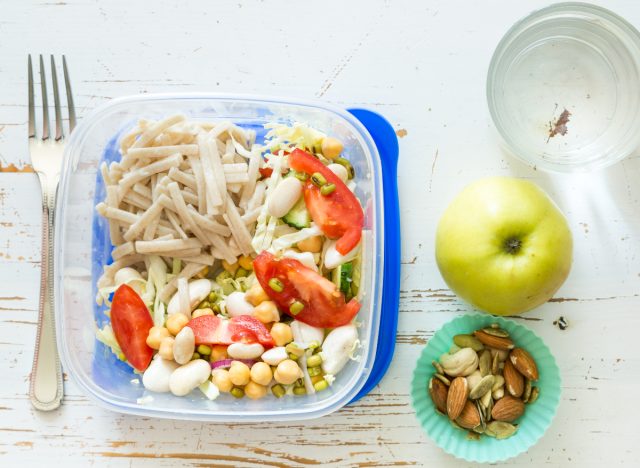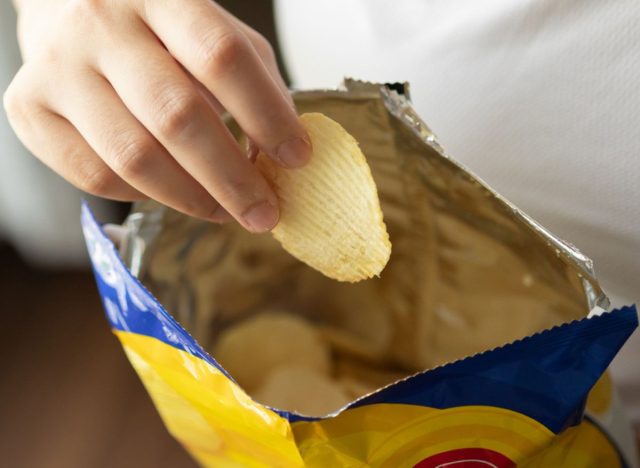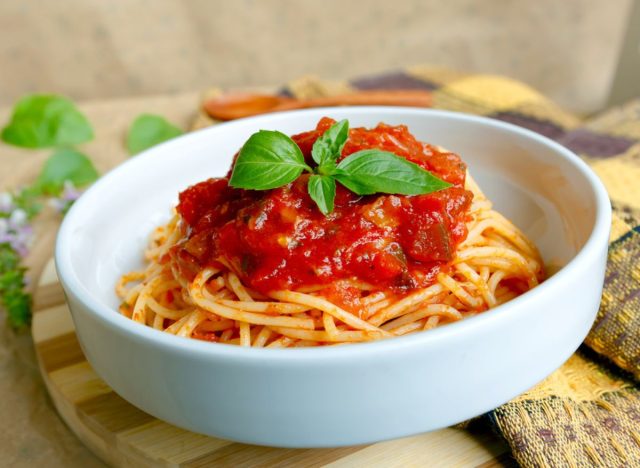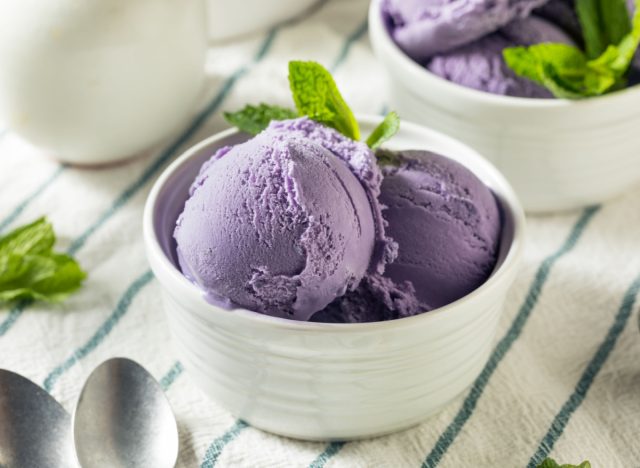What are the optimal serving sizes for losing weight? We inquired.
There are many things to consider when you are on a weight loss mission. Exercise and eating the right foods are key players, but portion control is just as important. Portion sizes are useful for setting limits and boundaries so you don’t overdo it. We’re here to break down the ideal portion sizes for weight loss and common portion size mistakes to avoid.
“When portions are in control, it keeps calories under control. And while weight loss isn’t just about consuming fewer calories than your body needs, it matters. When people tend to eat large portions, they tend to overconsume calories and gain weight in weight” Nutrition Twins®, Tammy Lakatos Shames, RD, CDN, CFTand Lyssie Lakatos, RD, CDN, CFTwho sits on our medical expert board explains.
There are many reasons people eat besides being hungry. For example, we eat because the food tastes really good or when we are sad, stressed or bored. It is sometimes easy to eat without even thinking about it or in social situations.
“All of these can cause us to eat far more food than our bodies require,” warns The Nutrition Twins. “A lot of excess food and calories can be consumed if you let the other factors guide you. Add to that that many people don’t recognize their feelings of hunger and satiety, so they don’t know when to eat – or stop eating, so they can’t use their hunger as a guide to how much food they should eat to give them energy without overeating.”
What are ideal portion sizes for weight loss?

Now, what are the ideal portion sizes for those looking to lose weight?
According to Nutrition Twins, “While we have general guidelines, we usually make more personalized recommendations when working with our clients based on their size, activity and stress level, etc., and we further adjust it based on how they feel, how their body reacts , if it makes them too hungry, etc.”
As general guidelines, this is what they usually recommend:
- Vegetables: Always incorporate at least 2 cups of lightly steamed (or raw) vegetables and leafy greens.
- Protein: Large men should consume 5-7 ounces of protein in each meal; small females should consume about 3-4 ounces of protein per meal. “Everyone else falls between the two,” adds The Nutrition Twins. “Again, a good rule of thumb is to use the size of your palm to guide you.”
- Carbohydrates: Large, active men should consume about 1.5-2 cups of carbohydrates per meal; small females should have about ½ to 1 cup of carbohydrates in each meal. Everyone else falls in between.
- Fat: Large males should consume close to 1.5-2 tablespoons of fat; small females should consume about 2 teaspoons of fat in each meal.
- Snacks: “This is a general guideline, but we try to have our customers combine protein and fiber for steady energy and blood sugar [and] satisfaction,” The Nutrition Twins explain. berries.
Common portion size mistakes to avoid:


1. Assuming the restaurant sizes are the correct portion sizes
Restaurants are a common place where portion size mistakes are made. Many restaurants go overboard with large portions—especially refined carbohydrates—to make you feel like you’re getting the most bang for your buck.
“Assuming that the large portion we’re served is the right portion for us is a big mistake that easily causes weight gain,” say The Nutrition Twins.
2. Not paying attention to portion sizes for carbs
It’s easy to take your favorite breakfast cereal and fill your bowl to the top with it.
“Mistakes we often see with new clients are carbs — like pouring a bowl of cereal,” The Nutrition Twins explain. “They assume a bowl full of cereal is the serving, when a serving is usually only ½ to 1 cup, but many bowls hold two to three times that amount.”
3. Eat directly from the bag or box
Eating straight from the bag, box or container is another place to go wrong.
“It becomes virtually impossible to know how much you ate — unless you’ve finished eating everything in the bag or container — which is usually not a good sign,” The Nutrition Twins point out.
How can you estimate portion sizes without measuring?


Nutrition Twins usually recommends a few references to guide you in the right direction when looking at serving sizes.
“So have we [our clients] weigh/measure some common foods they eat at home every week or so, to familiarize them with portions and to help them learn to eyeball and compare sizes to the size of their hand, etc.,” they note.
RELATED: How to Read a Food Label for Weight Loss
Here are some common ways to estimate portions:


- A portion of poultry or meat = the size of your palm
- A 3-ounce serving of fish = the size of a checkbook
- Half a cup of ice cream = the size of a tennis ball
- A serving of cheese = the size of a set of dice
- Half a cup of cooked pasta, rice or snacks like pretzels or chips = the size of a tennis ball or a round handful
Alexa Mellardo
Alexa is the Mind + Body Deputy Editor of Eat This, Not That!, overseeing the M+B channel and delivering compelling fitness, wellness and self-care topics to readers. Read more about Alexa

